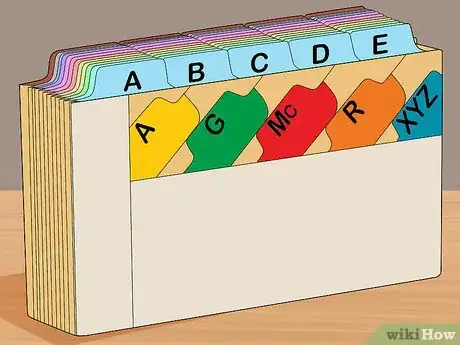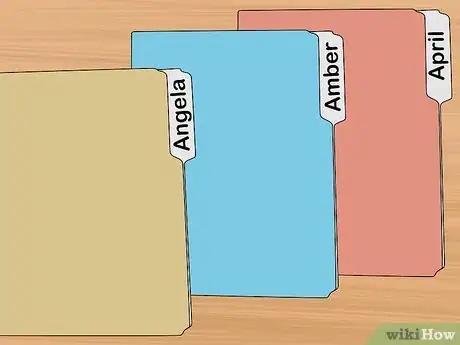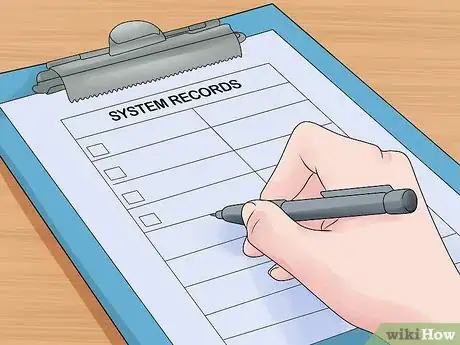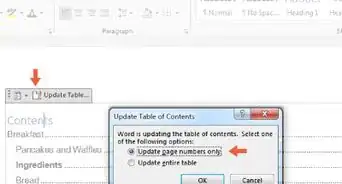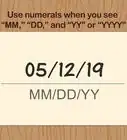wikiHow is a “wiki,” similar to Wikipedia, which means that many of our articles are co-written by multiple authors. To create this article, volunteer authors worked to edit and improve it over time.
This article has been viewed 90,736 times.
Learn more...
Alphabetizing is a useful and effective way to organize words, information and objects for school, work or personal use. Whether you’re planning to alphabetize important documents or your massive record collection, the rules of alphabetizing can be trickier than just knowing your ABCs. Follow these steps to properly alphabetize.
Steps
Preparing Your Information for Alphabetizing
-
1Place your information or objects in an easily visible location. Seeing all of the data that you need to alphabetize will help make the process go quickly and smoothly.
- If you’re organizing data on a computer, it may help to create a new file or folder for alphabetizing to avoid confusion.
- If you’re alphabetizing objects, such as records or books, remove them from their current placement so that you can more easily see the names
-
2Create an open and accessible space to place your information or objects for alphabetizing. Avoid clutter and confusion by creating a clear area where your data or objects will go as you alphabetize them.Advertisement
-
3Decide if you wish to place your objects or data in alphabetical order by name, title or another system.
Alphabetizing your Information
-
1Place the item that begins with the letter “A” at the beginning and work in order through the alphabet towards “Z”.
-
2Compare the first letter in the first word.
- Place the two items next to each other to determine which comes first in the alphabet.
- Choose the one that is closer to the beginning of the alphabet (“A”) first, followed by the one that comes later in the alphabet.
-
3Compare the next letter in the words if the first letter is the same.
- For example, if the first two letters in one word are “Am” and the first to letters in the other word are “An”, then place “Am” before “An”.
- Continue comparing the next letter in the word if the words continue to have the same letters until you reach a difference in the letters, then place the word that has a letter that appears first in the alphabet before the other word.
- If you get to a point where there are no more letters to compare in one word to the other, the word with the shorter string of letters goes first in the alphabetical order.
- If the first words in two items are the same, look to the spelling of the next word to determine which one goes first.
-
4Organize the names of individuals by last name followed by first name and then middle initial or name.
- If you’re alphabetizing books or documents, it’s easier to organize and search using the author’s last name.
- For example, “John W. Adams” would be listed as “Adams, John W.” and would go before “Adams, John B.”, which would go before “Adams, Lenny A.”
-
5Treat hyphenated names and titles as one word.
-
6Spell out numbers in titles to alphabetize them. For example, “12 Angry Men” should be ordered as though it were written as “Twelve Angry Men”.
-
7Make a record of the system you used to alphabetize. If you’re organizing a large amount of data or objects, a record will help other people follow and maintain your system, and remind you if you forget.
Community Q&A
-
QuestionHow would I file a person if he has two last names? For example: John Doe-Wolf.
 Community AnswerHyphenated names are treated as one unit. Thus, the name would be filed as: Doe-Wolf, John.
Community AnswerHyphenated names are treated as one unit. Thus, the name would be filed as: Doe-Wolf, John. -
QuestionWhere do you file initials, like 'AT&T'?
 Community AnswerThe same way as normal words, under the letter A. For example: 1. Allstate. 2. Amazon. 3. AT&T. 4. AutoZone.
Community AnswerThe same way as normal words, under the letter A. For example: 1. Allstate. 2. Amazon. 3. AT&T. 4. AutoZone. -
QuestionHow can I alphabetize book titles?
 Community AnswerJust alphabetize normally, A to Z. You can choose to put series in order of publication or in alphabetic order.
Community AnswerJust alphabetize normally, A to Z. You can choose to put series in order of publication or in alphabetic order.
About This Article
Alphabetizing can seem confusing at first, but once you get the system down, it’s easy! Start by comparing the first letter of each word, name, or title that you're trying to alphabetize. In general, words that start with “A’ should come first, words that start with "B" should come second, and so on through the alphabet. If there are multiple words that start with “A” compare the 2nd letter in those words. For example, with the words “Anchor” and “Amp,” “Amp” would come first, since “m” comes before “n” in the alphabet. If the 2nd letter is also the same, look at the next letter to see which one comes first in the alphabet. When alphabetizing names, it’s best to use last names to keep things straight. If there is more than 1 of a certain last name, refer to the first name for alphabetizing. For instance, “John Adams” would come before “Ralph Adams.” To learn how to organize your files on the computer, read on!

